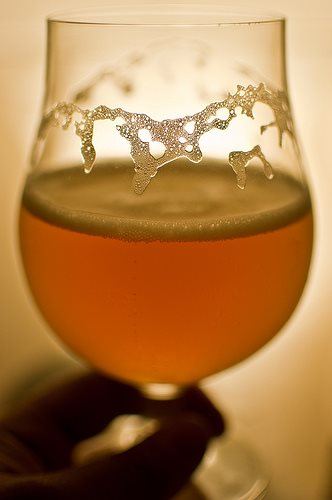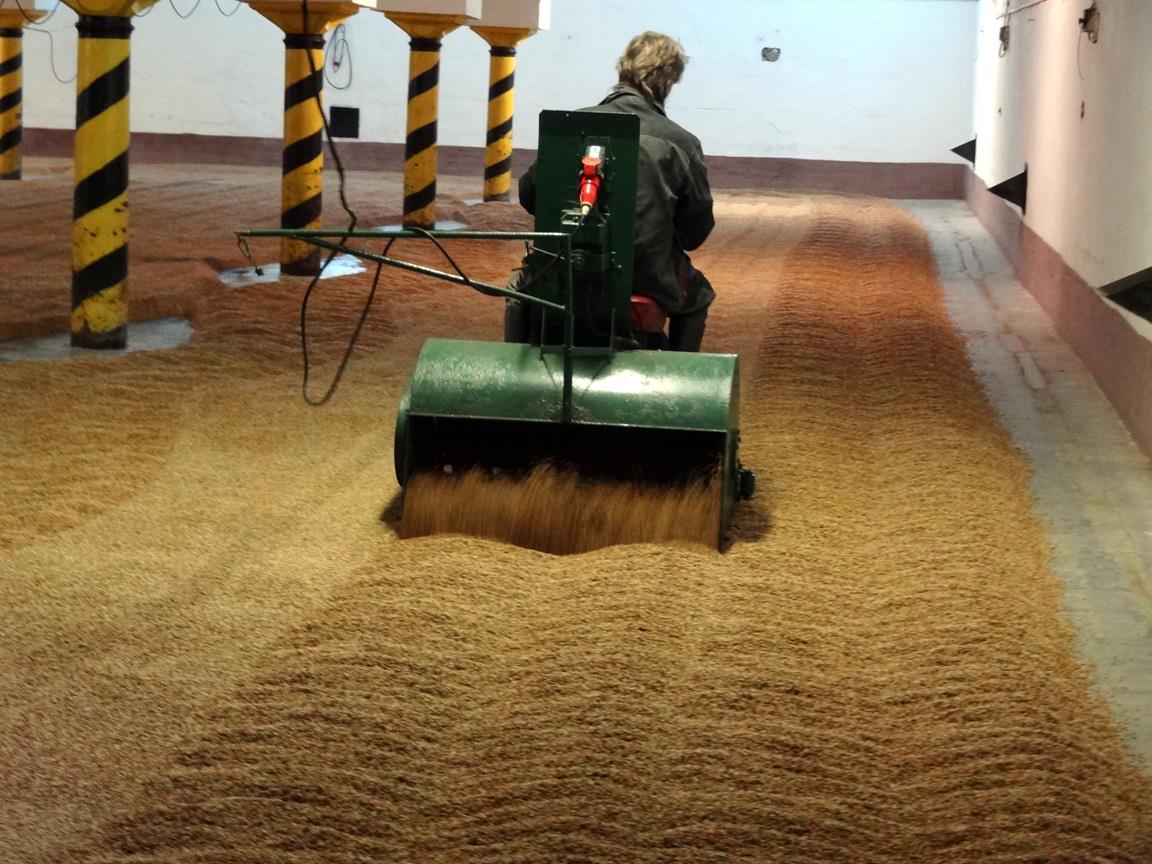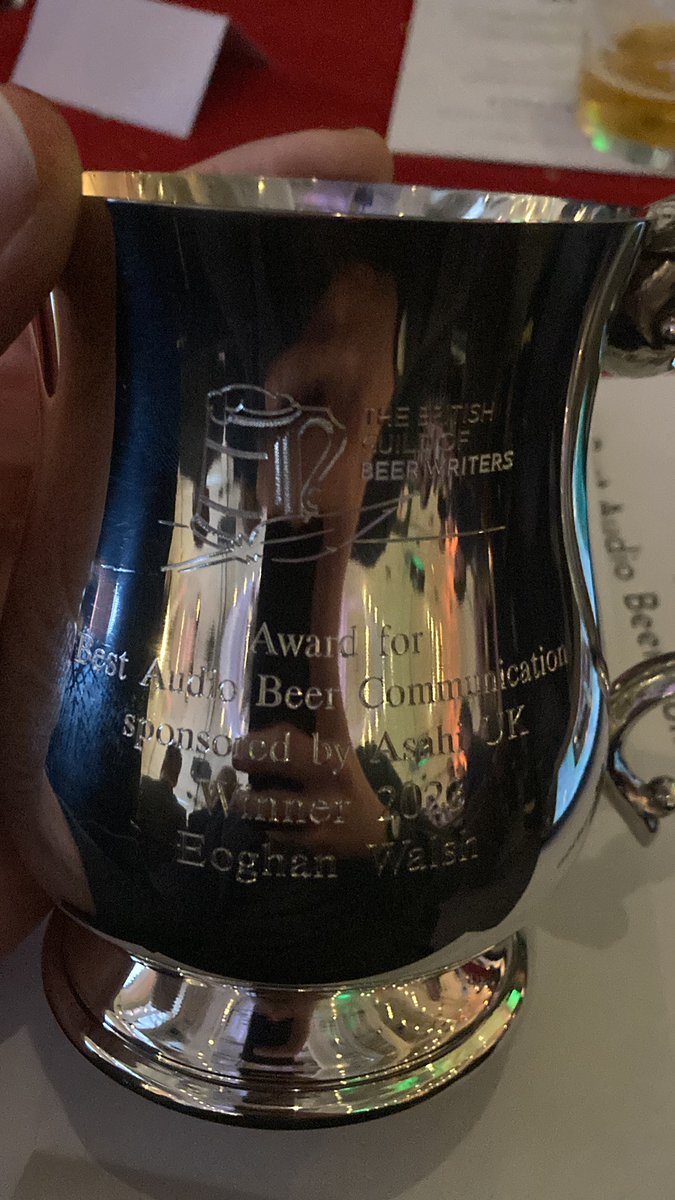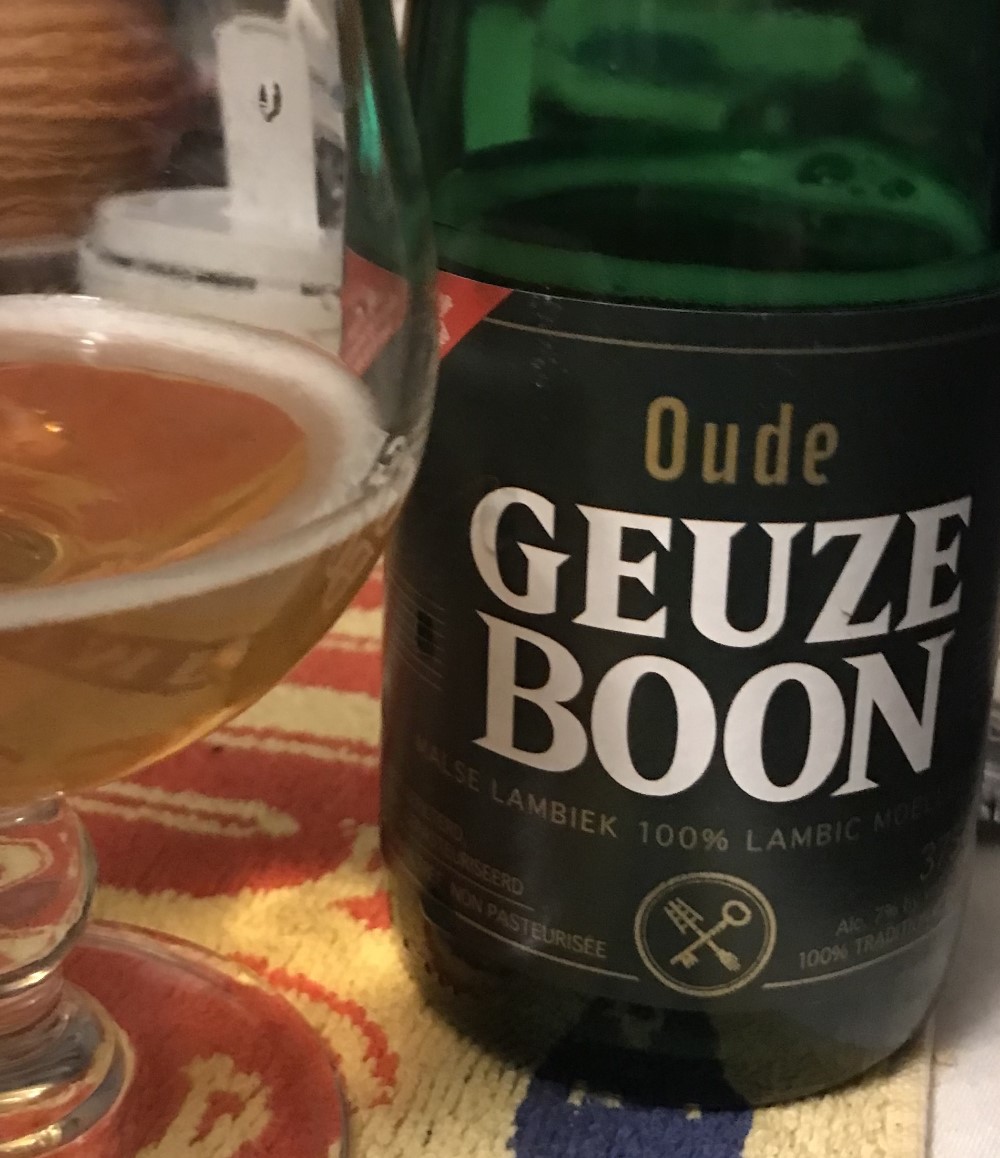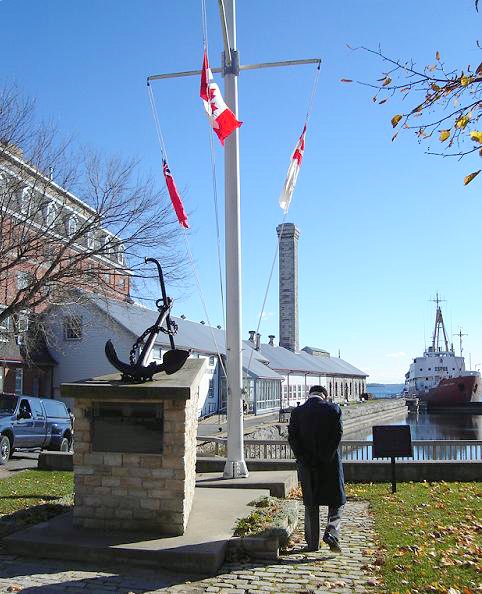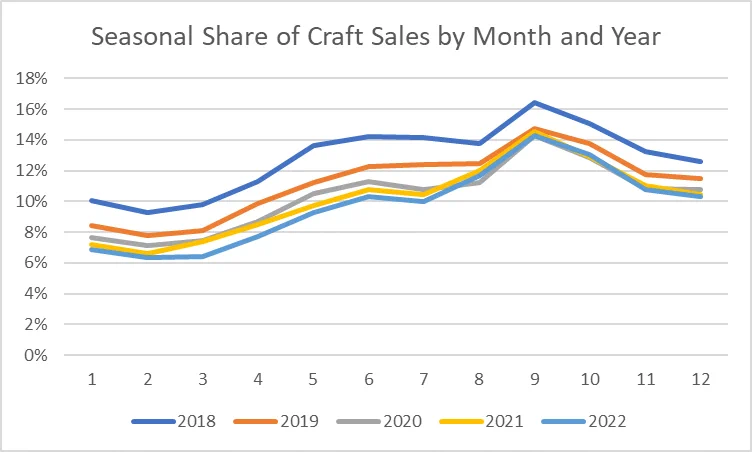 It takes a lot to be a really good futurist. First, a short memory so you forget all the failed claims you’ve made. Second, a globe and a flashlight. That’s it. Makes sense as every January, tryptophan-fuel prognostications by holiday break junior interns flood the media as we seek to live in an alternative reality. Beer is no different but just because the filla is flowin’ doesn’t mean it doesn’t mean there’s nothing interesting being said. I think of it as fan fiction. As we canvass those who took the time to mail in a “best of what’s never gonna happen” listicle, let’s just recall how we were promised in 2019 the best has yet begun for Brut IPA, in 2020 White Claw and Truly had established themselves as cool in a can and in 2021 more and more young drinkers would become fans of craft. Yup, there is a definite skill set behind the beer futurists.
It takes a lot to be a really good futurist. First, a short memory so you forget all the failed claims you’ve made. Second, a globe and a flashlight. That’s it. Makes sense as every January, tryptophan-fuel prognostications by holiday break junior interns flood the media as we seek to live in an alternative reality. Beer is no different but just because the filla is flowin’ doesn’t mean it doesn’t mean there’s nothing interesting being said. I think of it as fan fiction. As we canvass those who took the time to mail in a “best of what’s never gonna happen” listicle, let’s just recall how we were promised in 2019 the best has yet begun for Brut IPA, in 2020 White Claw and Truly had established themselves as cool in a can and in 2021 more and more young drinkers would become fans of craft. Yup, there is a definite skill set behind the beer futurists.
UPDATE: despite the footnote below, GBH seems to have woken from its slumber and posted David Jesudason‘s piece (adding to a theme this week) on the traditional Belgian brewers of Hof ten Dormaal:
Since its founding in 2009, Hof ten Dormaal—located on a 12th-century farm in the village of Tildonk, deep in rural Flanders—has charted its own stubborn course and defied expectations. It’s not just that unusual founding story that defines it. The brewery’s perspective is informed by its owners’ strong opinions about what it means to make and sell “farmhouse” beer, and the beer they produce reflects their characters as well as their struggles.
First, however, a little tidying up with noting Ed posted his Golden Pints with a special nod to his final category for I suppose three distinct reasons:
Simon Johnson Award for Best Beer Twitterer: Sadly the decline of twitter is continuing but I think Jessica Mason has been best for news this year so @drinksmaven
And, speaking of tidying up afterwards, The New York Times posted a piece on the history of the word “toast” in the drinking sense:
The word came to us through the Middle English “tosten” in the 12th century. The noun, meaning bread that had been browned with heat, and the verb, “to brown bread,” may have derived from the Old French toster, “to roast or grill,” or the Latin torrere, “to burn”… But in the Middle Ages, toast was used to flavor a drink… the practice of “toasting” someone stemmed from the days when people would put “pieces of spiced toast into your mead or your wine.” Toasting a person, he said, is like “putting their name in your glass,” as if they add spice or sweetness.
And Martin posted his awards for the best experiences and the best pubs of 2023 including this transporting revelation:
The rail companies are my Villains of the Year. Which is a shame, as I’ve used rail a lot this year, as relentlessly slogging up and down the A1 to see parents has taken its toll on my desire to drive much at all after taking the campervan round the UK to complete the Guide last year. I wondered if I’d get a bit bored of this blog after finishing the GBG, but it started as a travel diary and I still love the writing, and your comments, and the views from (nearly) all over the globe. 813 posts this year, scarily that’s 3 less than 2022.
So… unless I have missed anything else that is soooooo last year… what is the story of 2024 for the perspective of all we all standing here in week one? First, Matthew shared his thoughts for the newsletter of homebrey supply shop Get ‘Er Brewed including this theme I’d be rooting for personally – a Belgian beer revival:
Purists may argue that these sorts of beers haven’t gone anywhere, and they’re probably right. But I don’t think the excitement around Belgian beer is what it was five or ten years ago. In my early days as a beer blogger, I’d enthusiastically take trips to Brussels and Bruges, merrily sipping away on strong beers inside the country’s famous brown cafés. I don’t quite have that same spark at the moment. Although, the other week I got myself a bottle of Oerbier from De Dolle brewery, and thought to myself “I need to start drinking more of this again.”
And Eoghan Walsh shared some thoughts actually from Belgium as well:
A crunch looks to be coming, and soon. It’s not a radical prediction to suggest that some of the first places to go will be the zombie businesses – those that have survived the post-pandemic recovery in a sort of a limbo with their base motor functions intact but without much prospect of a meaningful revival. In 2024, expect the definitive blow to arrive for more of these kinds of bars of cafés. For some of these, time was already called in 2023. The Old Hack, in Brussels’ European quarter, was one such zombie put out of its misery for good.
Sweet anecdotes about needy Nigel Farag hovering included! And Richard Preiss of Escarpment Labratories, perhaps a bit of a cheat given his access to commercial orders and in house R+D, presented his own set of predictions including one that fully deserves the label – “rent beer”:
The idea here is to ensure that your brewery’s lineup has a “rent beer”, a beer that helps pay the rent bill (or mortgage, or glycol chiller maintenance bill). It might not be the top seller, but it’s beer you can produce and sell in volume, with low production costs. This means it shouldn’t be aggressively full of hops or malt, shouldn’t take 10 weeks to ferment and condition, and shouldn’t require any excessively complex processing methods. Luckily, a lot of styles fit into this mold. And luckily, there’s probably not a “go to” option in your local market for all of these styles, so you can carve out a new niche.
Next, WineEnthusiast finally broke with what I had long presumed was largely a dour Scots Presbyterian base with this prediction:
Saturdays traditionally have accounted for 28% of the total weekly value in the market. However, Fridays, Saturdays, Wednesdays and Thursdays are all losing their share to Sundays. In other words, more people work from home on Fridays and Mondays, returning to the office during the middle of the week. “People seem to be more inclined to enjoy themselves on Sundays—perhaps because they don’t have to worry about work the next day…”
And Michigan business writer Abby Poirier nibbled around the idea that chasing the tail of a new flavour every week is no longer going to be enough:
And finally the Tand has forecast something very exciting for the next 12 months – more Tand!
The blog will certainly be back a little more often, and I’ll be returning to short sharp posts like I used to. I’ve been reading a lot of my previous stuff, and you know, it isn’t that bad. I recommend particularly my stuff on Sam Smiths, and I’ll be resuming my trek round the ones here and those I visit in London. I’ll also tackle the issue of what might be called “opening hours deficit”. I note quite a few pubs here, have simply closed for parts of January, and while understandable, it isn’t really a healthy sign.
Is any of that going to happen? Some of it will… some won’t… but none of it not one bit of it is going to happen if you all take January off from your boozing!!! Dryuary or whatever it is called is reliably the biggest threat to the world of beer again this first week of the year. Aspects of post holiday season return to common sense sobriety include: (i) CAMRA asking “charities running challenges or fundraising: please ensure your messaging doesn’t encourage people to avoid pubs and social clubs altogether” because it is not “responsible or evidence-based“, (ii) Mudgie proclaming “it’s a deliberate, calculated attack on the pub trade“, (iii) from the Irish Independent: “I don’t know anyone planning to drink more in 2024 than they did in 2023” with “planning” doing a lot of lifting there, (iv) And on Twex “Not January! It’s dark and cold and this is when we NEED alcohol!” which is probably the most honest response. Always the voice or reason – or close enough to one for jazz – Jeff suggests an alternative:
Make this month #PubJanuary. Stop in for a quiet pint, grab dinner out, spend the afternoon playing a board game. It doesn’t really matter what you do—you don’t even have to drink alcohol—but if people kept up their July pace of pub-going, it would make a big difference. We’re not talking the salt mines, either; going out is fun! Consider it a vacation in an evening. In fact, January is typically the deadest time of the year—a perfect opportunity to connect with friends. Enjoying other humans is good for your soul.
Perhaps indicating that there might be another reasons for the problems breweries may be facing, venerable Mid-Atlantic craft brewer Flying Fish seems to be going under weighed down by an incredible level of debt compared to the value of its assets:
Flying Fish Brewing Co., a Pennsylvania brewery that operates in South Jersey, has filed for Chapter 11 bankruptcy protection after a deal fell apart that would have seen the company sold to Cape May Brewing Co. Flying Fish “listed $1.3 million in assets and $9.3 million in liabilities in its Chapter 11 petition, which was filed in late December in U.S. Bankruptcy Court in New Jersey. The company is owned by Elk Lake Capital, a capital investment firm in Scranton that acquired Flying Fish in 2016,” the Philadelphia Inquirer reported.
Wow. Now that is an assets to liability ratio! Never one for the liable, the award for the first best bit of beer writing of 2024* goes to Katie Mather in Pellicle:
Clouds hang low in the grey of March midweek, obscuring the peaks of New Mills’ surrounding cloughs when we arrive. Through a hollow of rich black soil and slippery rocks is a barely-contained river, pouring its peat-bronzed waters white over weirs, down past the Victorian mills that gave this town its name. Across this gully is where the monsters of Torrside dwell, by the still channels of the canal marina, restless and glimmering in the gloom. The owners of Torrside—a brewery founded here in Derbyshire’s High Peak in 2015—are also its brewers, a team of best friends and their partners. .
From our overseas desk, we learn from Uganda that one form of traditional beer is under threat:
At least once a week, Girino Ndyanabo’s family converges around a pit in which bananas have been left to ripen. The bananas are peeled and thrown into a wooden vat carved like a boat, and the patriarch steps in with bare feet. The sweet juice he presses out is filtered and sprinkled with grains of sorghum, which converts the juice into ethanol, and left to ferment for up to a day. The result is a beverage Ugandans call tonto, or tontomera, a word in the Luganda language that alludes to drinkers’ poor coordination… But its production is under threat as cheap bottled beer becomes more attractive to drinkers and as authorities move to curb the production of what are considered illicit home brews, which have the risk of sometimes deadly contamination. And because tonto production takes place outside official purview, authorities are unable to collect revenue from its sale.
Errr… drinking like Mummy and Daddy is exactly what the pub manager said it is – whether you care or not is another question:
Dr Renée Hoenderkamp, the television doctor, was dining in the restaurant at the Old Bull & Bush in Hampstead, north London, on New Year’s Eve with her husband and daughter when she made a request for all three of them to clink their glasses. She and her husband were drinking wine in champagne glasses, so they asked a waiter for apple juice to be served in one too so their daughter could join in the celebrations at around 7pm. But Dr Hoenderkamp, an NHS doctor who hosts a show on TalkTV, says that a manager at the gastropub told her “it could encourage her to drink alcohol and it’s not a great look” and served it in a tumbler instead.
Of course giving a kid something in a wine glass is mimicking wine drinking. Me, I actually thought the parents should have then ordered Manhattans and let that kid something something in a similar tumbler, too.
There. I said it. Time to get real. Get a move on. The darkest month of the year are now past us. Yes, the days are already really getting longer. And remember, ye who read this far down to see if I have edited these closing credits and endnotes (as I always do), you can check out the many ways to find good reading about beer and similar stuff via any number of social media and other forms of comms connections. This week’s update on my emotional rankings? Facebook still in first (given especially as it is focused on my 300 closest friends and family) then we have BlueSky (up three to 104) rising up to maybe… probably… likely pass Mastodon (910 – down another one) in value… then the seemingly doomed trashy Twex (4,430 – one more week with a gain!) hovering somewhere above or around my largely ignored Instagram (creeping – literally – up to 165), with sorta unexpectly crap Threads (43) and not at all unexpectedly bad Substack Notes (1) really dragging up the rear – and that deservedly dormant Patreon presence of mine just sitting there. All in all I now have to admit my dispair for Mastodon in terms of beer chat and accept that BlueSky is the place in “the race to replace.” Even so and all in all, it is #Gardening Mastodon that still wins but here are a few of the folk there perhaps only waiting to discuss beer:
Alan McLeod | A Good Beer Blog (… me…)
Stan Hieronymus | The Man!
Boak & Bailey | The B² experience
Curmudgeon Ale Works | Jonathon is Brewing
Katie Mather | Shiny Biscuit and Corto
David Jesudason | “Desi Pubs” (2023) author
BeoirFest | They say “Let’s Talk Beer”
Ron Pattinson | The RonAlongAThon Himself
Al Reece AKA Velky Al | Fuggled
Jennifer Jordan | US hops historian
Andreas Krennmair | Vienna beer and lager historian
Beer Ladies Podcast | Lisa Grimm and colleagues
The Bar Towel | Toronto’s chat zone for beer lovers
Chicago Beer Society | Folk in Chicago getting social over beer
Jay Brooks | Brookston Beer Bulletin
Joe Stange | Belgian beer expert, beer magazine editor
Cider Bar | Barry makes Kertelreiter cider
Laura Hadland | CAMRA historian and beer writer
Brian Alberts | US beer historian
Jon Abernathy | The Beer Site
Maureen Ogle | US Beer Historian
Lars Garshol | Norwegian Beer Historian and Kveik Hunter
James Beeson | Beeson on Beer
Carla Jean | MAINER!!!
Thandi Guilherme | Beer Ladies Podcast Co-host
Lisa Grimm | Beer Ladies Podcast Co-host
Roy of Quare Swally | Beery ramblings from Northern Ireland
Rob Talksbeer | Podcaster and Youtuber
Anthony Gladman | UK Drinks Writer
Jeff Alworth | Manna Of Beervana
Northwest Beer Guide | Fairly self explanatory… but not NW Latvia…
Evan Rail | Prague based GBH editor, freelance writer, NYT etc.
Todd Alström | 50% of the Alströms
Jacob Berg | Beer talking librarian
And remember to check the blogs, newsletters and even podcasts (really? barely! This era’s 8-track tapes!) to stay on top of things including the proud and public and certainly more weekly recommendations in the New Year from Boak and Bailey every Saturday and Stan at his spot on those Mondays when he is not SLACKING OFF! Look at me – I forgot to link to Lew’s podcast. Fixed. Get your emailed issue of Episodes of my Pub Life by this year’s model citizen David Jesudason on the odd Fridays. And Phil Mellows is at the BritishBeerBreaks. Once a month, Will Hawkes issues his London Beer City newsletter and do sign up for Katie’s now much less occassional but always wonderful newsletter, The Gulp, too. Ben’s Beer and Badword is back with all the sweary Mary he can think of! And check out the Atlantic Canada Beer Blog‘s weekly roundup. There is new reading at The Glass. Any more? Yes! Check to see the highly recommended Beer Ladies Podcast. That’s quite good. And the long standing Beervana podcast . There is the Boys Are From Märzen podcast too and Ontario’s own A Quick Beer. There is more from DaftAboutCraft‘s podcast, too. All About Beer has introduced a podcast… but also seems to be losing steam. And there’s also The Perfect Pour. Plus follow the venerable Full Pint podcast. And the Craft Beer Channel on Youtube and remember BeerEdge, too, and The Moon Under Water… if you have $10 a month for this sort of thing… I don’t. Pete Brown’s costs a fifth of that. There was also the Beer O’clock Show but that was gone after a ten year run but returned renewed and here is the link!
*Perhaps it would be more of a contest had GBH not apparently taken all those weeks off (and still not updating the home page from the Signifiers of 2022 by January 3, 2024 even though the 2023 version was posted over ten days ago.)

